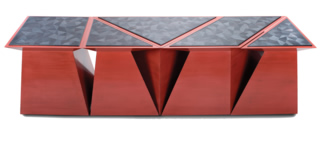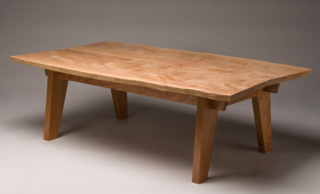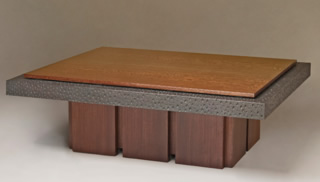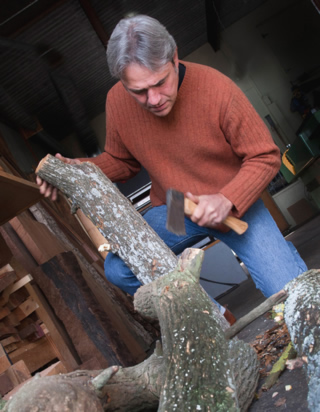Whimsy in Wood - Page 3
 |
 |
|
|
|
 |
 |
|
|
|
 |
|
|
His joinery is all mortise and tenon, not screws, but unlike the work of an earlier generation of California furniture makers, or those rooted today in Arts and Crafts movement (1860-1910), it's rarely visible.
"I'm drawn towards a contemporary bent," he says. "I want the expression of who I am, what my environment is, and now. Arts and Crafts was there for a reason. It made sense. It fit that time period. Unless you want to live in a historical atmosphere, it doesn't make a lot of sense today."
Cullen attributes some of his interest in modern design to an early love for the flat-roofed, glass-walled homes he saw while walking his Oakland hills neighborhood with his parents. His mother filled their home with Scandinavian modern.
Cullen also fell in love with some local modernist landmarks—Frank Lloyd Wright's Marin Civic Center, Welton Beckett's curved Kaiser Building by Lake Merritt, and Anshen and Allen's Lawrence Hall of Science in Berkeley.
Cullen's background as an engineer—he went into the field in part to please his father, who designed circuit boards—remains useful, and adds to the modern, stripped-down feeling of his work.
There was the time he was building an eight-foot-tall, curving display case when a fellow woodworker walked in. "He said that thing's never going to work. It's going to fall apart, because everything's too thin." "No, its actually perfect," Cullen answered. "Because I understand the material and what it can do."
 |
"I really like to push the limits of the materials, what they will do," he says "I hate waste. That's why I have trouble with the Arts and Crafts. You can take one of those chairs, and cut it up, and make three of them out of it. There's enough material to do it. I like that more lean, structural feel."
Lean and structural his pieces may be, but they do not eschew applied decoration. Cullen's got a strong romantic side. Carvings of swirls, wheels, pebbly forms, and bardic inscriptions give texture to many of his pieces. "They give it a tactile feel," he says of the decoration on one tall, painted cabinet. "You want to touch it."
Binzen loves Cullen's calligraphic carvings for their lack of formal structure. "You can really see the unguided hand in the work, which is appealing," he says. It brings personality into the work, and emotion.




